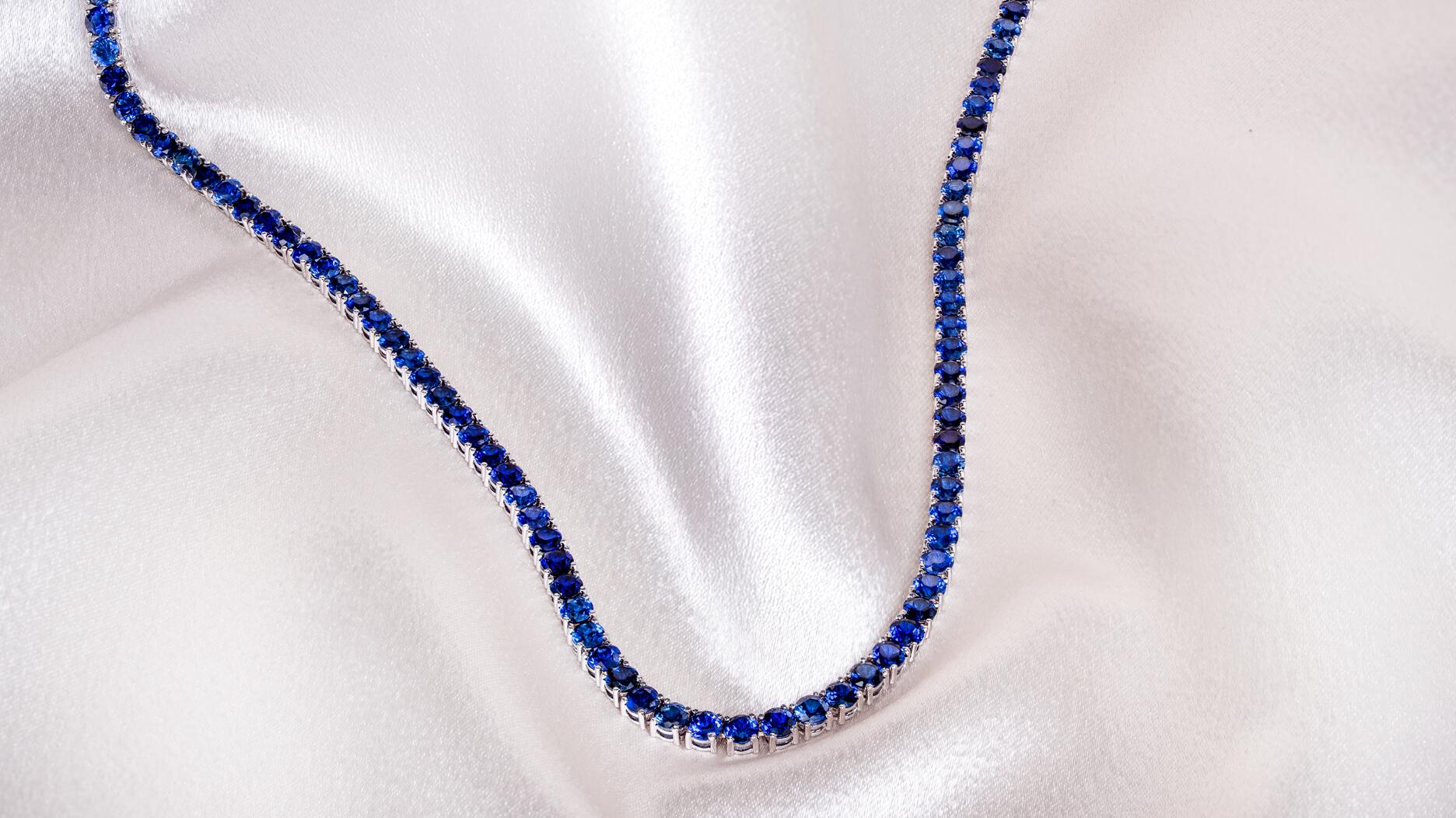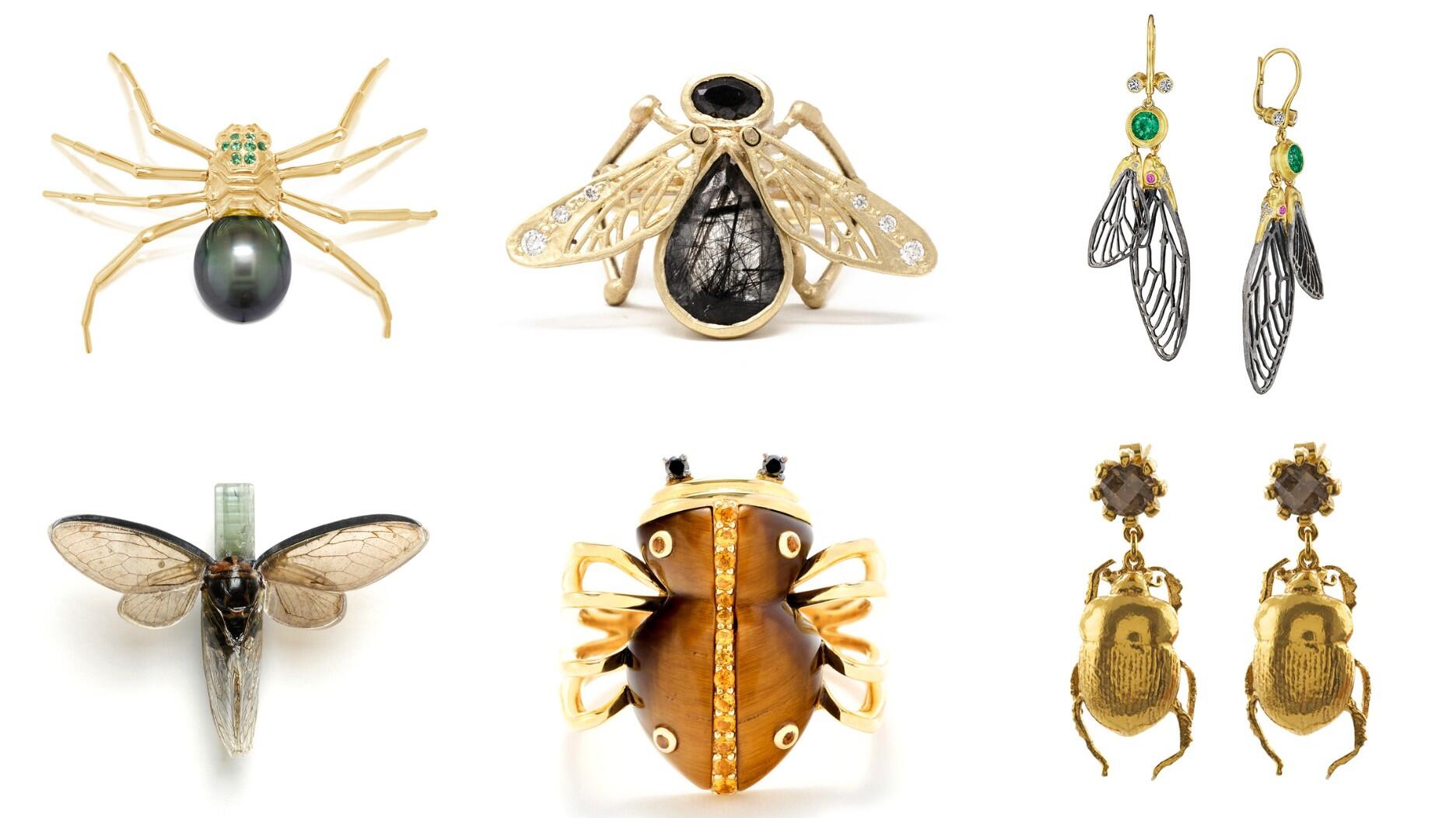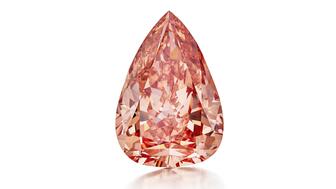The sale of the 31.68-carat, sunset-hued stone was part of Sotheby’s first series of events and auctions in Abu Dhabi.
5 Things to Know About … Ammolite
Senior Editor Brecken Branstrator details 5 interesting facts about the gemstone that is cut from the fossilized shells of a prehistoric creature.

There’s a gemstone that’s garnering more attention that could speak to those who not only like gemstones with provenance but also with a pretty cool back story.
Ammolite, the iridescent gemstone that’s actually cut from the fossilized shells of a prehistoric creature, comes from only one source only.
The gems have a truly fascinating story; here are five things you should know about them.
1. Nomenclature is key. There’s a difference in the names when it comes to gem versus fossil.
According to the GIA’s Gems & Gemology, ammonites were squid-like creatures with sharp, beak-like jaws, a spiral shell and tentacles. They went extinct about 66 million years ago.
Ammolite, meanwhile, is the trade name for the iridescent, nacreous layer of the shell of fossilized ammonite. Commercial quantities of gem-quality ammolite are only known to come very a few specific types of ammonite shells, the G&G article said.
The GIA said that a number of things must happen for ammonite to become an ammolite gem. It has to be buried quickly, deprived of oxygen, protected from heat and excessive weight, and not be scavenged.
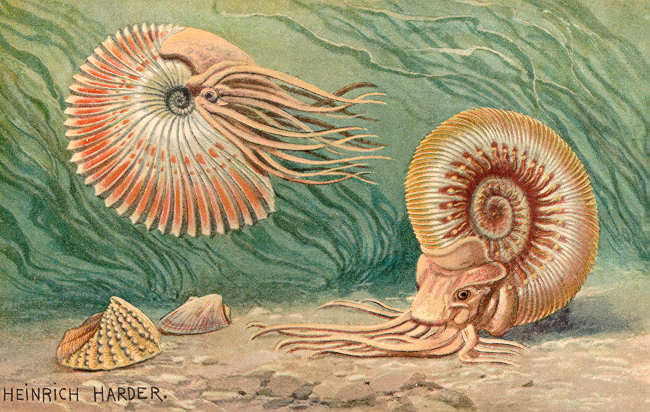
2. They only come from one place. The ammonite sea creatures were around long before there were seven continents. According to the GIA, there were only two large landmasses--Gondwana and Laurasia--on the Earth’s surface when they lived.
This helps explain how the water mass in which they lived (the Bearpaw Sea) during the Late Cretaceous period now is a rock formation that stretches through Montana, and Alberta and Saskatchewan, Canada.
While fossilized ammonites can be found in several places around the world, a small area within the Bearpaw Formation, the name for the area leftover from where sediment settled on the bottom of sea, in Southern Alberta, Canada, is the only location where they have been turned into gemstones.
The International Gem Society estimates that only about 5 percent of the ammonites found in Alberta have suitable gem material on the shell surface.
3. They are fairly new to the gem and jewelry world. Despite their historic formation, ammolite is one of the few new natural gems to be introduced into the market in the past 70 years.
It only started to appear in jewelry in the 1960s and was recognized as an organic gemstone in 1981 by the
And like tanzanite and sugilite--introduced to the trade in 1967 and 1980, respectively--ammolite occurs in large enough quantities to make it “economically significant,” Gems & Gemology said.
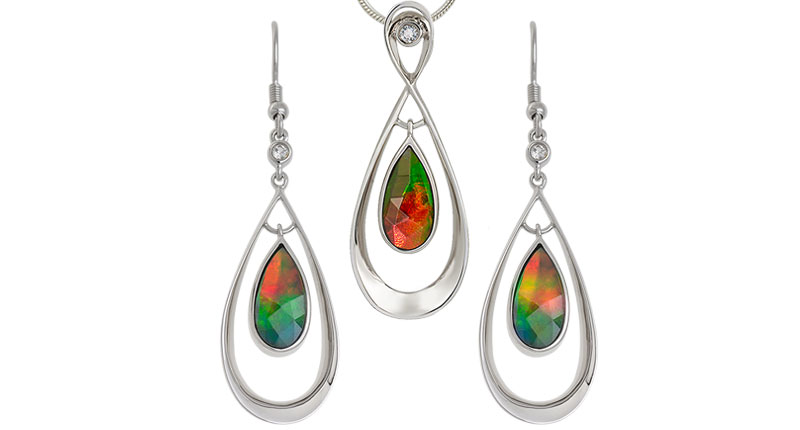
4. They vary in color and some colors are more valuable. Ammolite can come in any color in the rainbow but most are green and red. Blue and violet are rare and, typically, more valuable.
As is true for most gems, cost depends greatly on the color, which is graded on a scale from one to five. The brightness of the gem also is judged.
Ammolite also can show patterns of fractures on the surface, like stained glass. The GIA said that while fracture ammolite was common in the past, production today mostly includes sheet ammolite.
5. Demand is expected to increase. Korite International in Canada, the largest supplier of ammolite, said that it will quadruple the size of production within the next 12 months as more consumers across the world start to discover and buy the gemstone.
According to a local news story, the company currently is mining two acres a year but will expand to eight over the next year. Production is expected to increase from the current eight million carats per year, which already was increase over last year, to double within the next two years to meet demand across the globe.
The company even has targeted the United States as one of the markets where it believes ammolite could do well.
The Latest

Most customers who walk into your store this month have made up their minds. Your job is to validate their choice, Emmanuel Raheb writes.

The collection features characters and motifs from Ukrainian folklore, including an enchanted mirror and a magic egg.

How Jewelers of America’s 20 Under 40 are leading to ensure a brighter future for the jewelry industry.

MatrixGold 3.11, the newest version of the jewelry design program, offers more flexibility, precision, and creative control.


The pavilion will be part of the 2026 JA New York Spring show, scheduled for March 15 to 17.

Kadet, a 1994 National Jeweler Retailer Hall of Fame inductee, helped grow the family-owned retailer in the Chicago area and beyond.

Roseco’s 704-page catalog showcases new lab-grown diamonds, findings, tools & more—available in print or interactive digital editions.

Billed as the world’s smallest wearable, Lumia Health’s new smart earrings have a health tracker subtly embedded in the back.
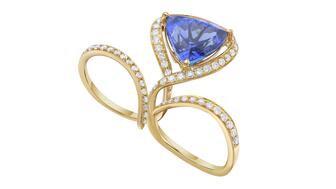
Don’t let those with December birthdays feel blue. Help them celebrate their month with blue zircon, turquoise, and tanzanite.

The new pink sapphire version of the piece dances with its wearer in the brand’s “Icons After Dark” holiday campaign.

A choice that’s generated a lot of commentary, Pantone says “Cloud Dancer” marks a fresh start and encourages relaxation and creativity.
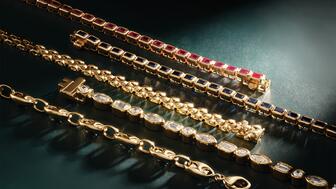
The manufacturer’s holiday campaign features a gift guide filled with trending designs and jewelry that can be personalized.
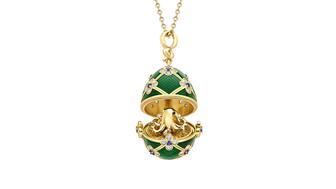
The man was charged with theft, accused of ingesting the necklace while in a jewelry store in Auckland, New Zealand.

The Florida independent expanded its store from 8,000 to 14,000 square feet, fulfilling the vision of its late co-founder, Jim Dunn.

Sponsored by De Beers Group

The classic 5600 series G-Shock has been scaled down to about a tenth of its size, becoming a fully functioning watch ring.

The association’s annual conference and gala will take place Feb. 4, 2026, during the Tucson gem shows.

The January show will include a workshop for jewelry retailers on implementing AI to strengthen their businesses.

Fellow musician Maxx Morando proposed to the star with a chunky, cushion-cut diamond ring designed by Jacquie Aiche.

The retailer, which sells billions in fine jewelry and watches, is suing the Trump administration and U.S. Customs and Border Patrol.

Black Friday is still the most popular shopping day over the five-day holiday weekend, as per the National Retail Federation’s survey.
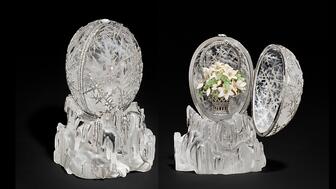
The historic egg, crafted for Russia's ruling family prior to the revolution, was the star of Christie’s recent auction of works by Fabergé.
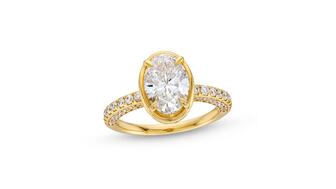
The retailer offered more fashion jewelry priced under $1,000, including lab-grown diamond and men’s jewelry.

The eau de parfum is held in a fluted glass bottle that mirrors the decor of the brand’s atelier, and its cap is a nod to its “Sloan” ring.

Vivek Gadodia and Juan Kemp, who’ve been serving as interim co-CEOs since February, will continue to lead the diamond mining company.

In addition, a slate of new officers and trustees were appointed to the board.










